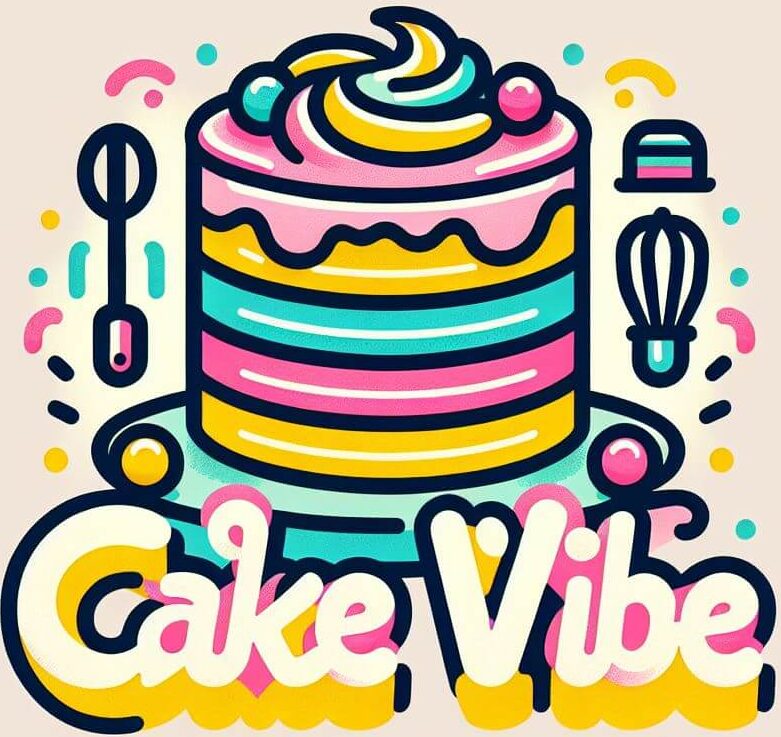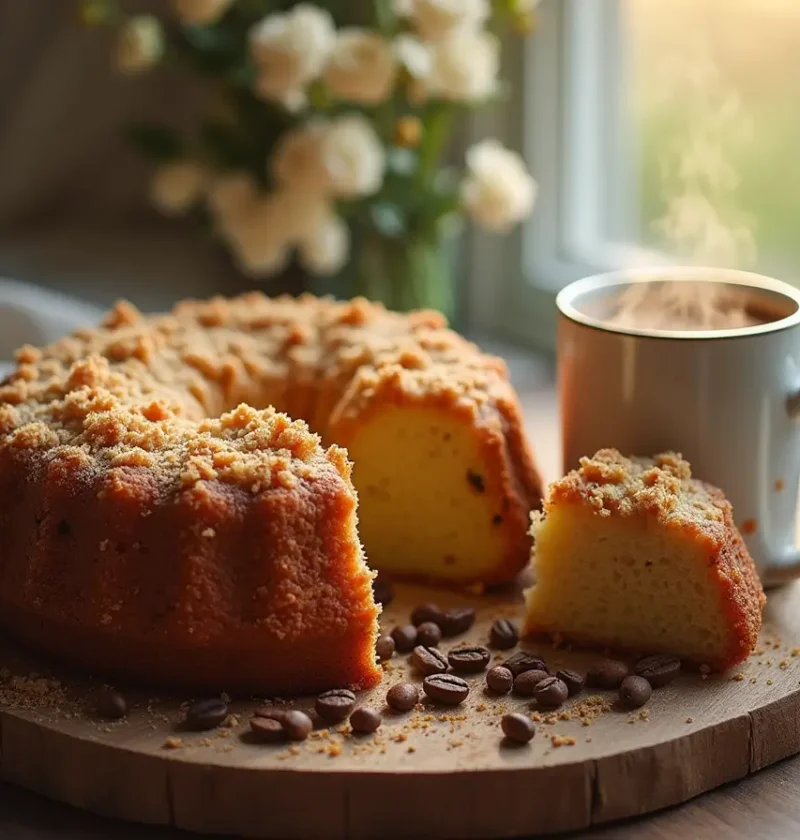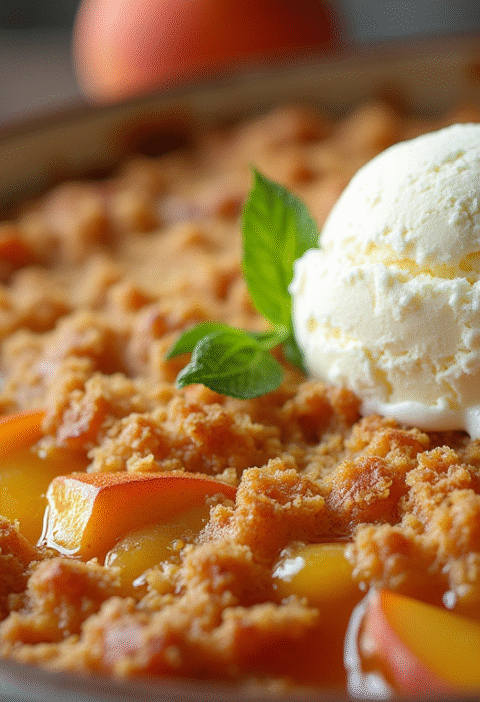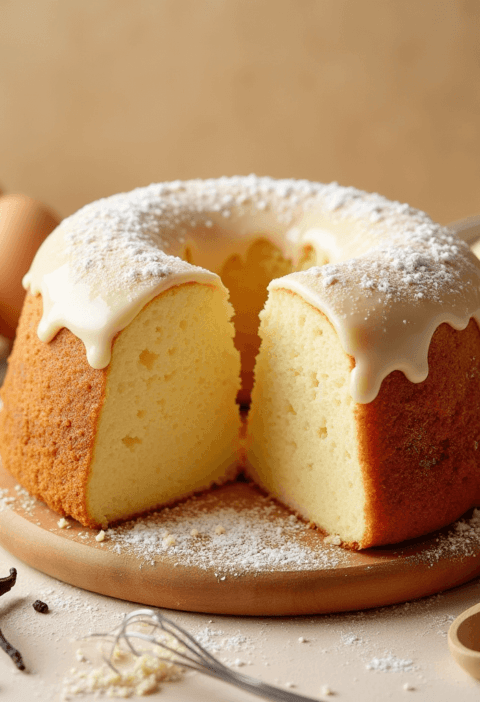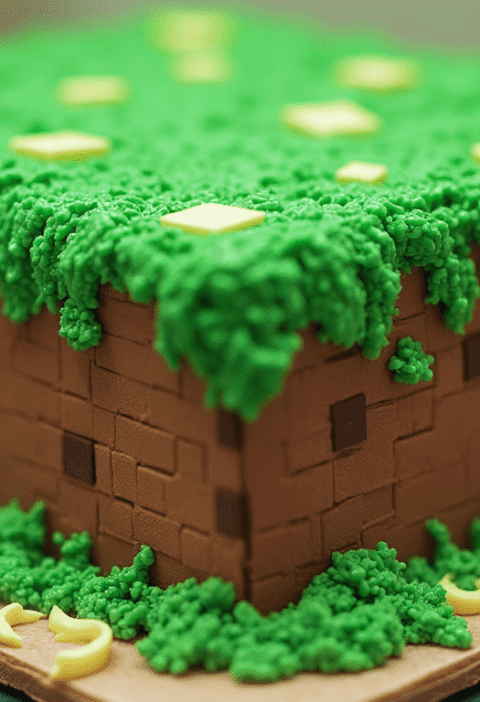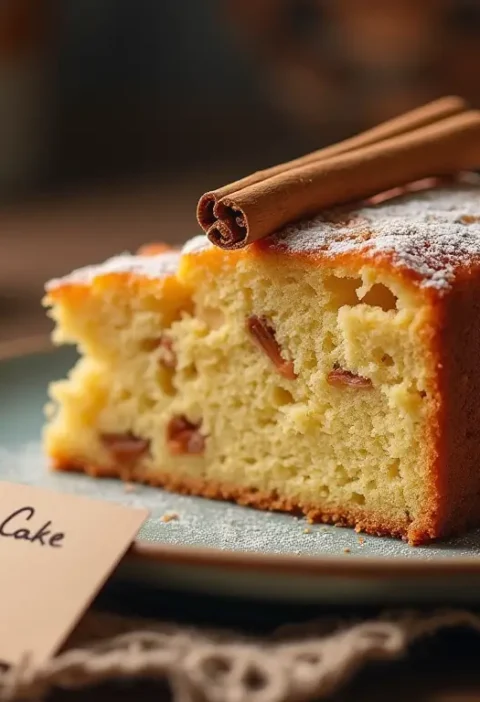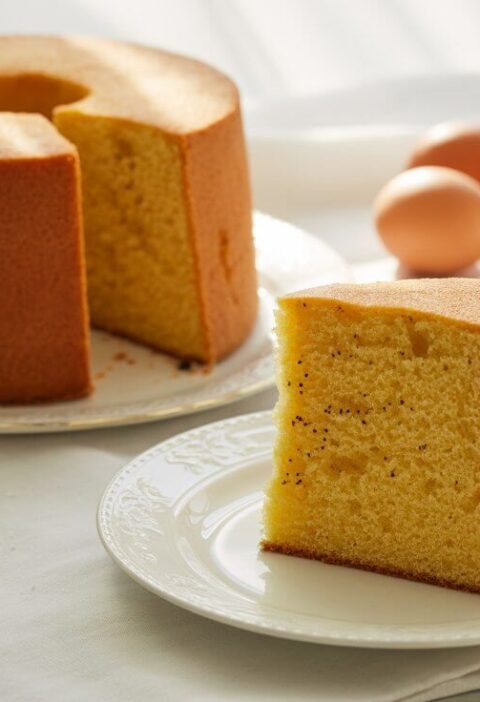Did you know that coffee cake doesn’t actually contain coffee? Despite its name, this beloved breakfast treat is designed to be enjoyed with coffee rather than containing it as an ingredient. This surprising fact challenges the common assumption many home bakers make when first encountering this classic recipe. Today, we’re diving into a foolproof coffee cake recipe that combines a moist, tender crumb with an irresistible cinnamon-sugar streusel topping. This delicious coffee cake can be prepared in just seven simple steps, making it perfect for both novice bakers and experienced pastry chefs alike.
Ingredients List
For the Cake:
- 2 cups all-purpose flour (substitute with 1:1 gluten-free flour blend for dietary restrictions)
- 1 cup granulated sugar (can use coconut sugar for a more caramel-like flavor)
- 3 teaspoons baking powder
- 1/2 teaspoon salt
- 1/4 cup unsalted butter, softened to room temperature
- 1 cup milk (almond or oat milk works well for dairy-free options)
- 2 large eggs, room temperature
- 2 teaspoons vanilla extract
For the Streusel Topping:
- 1/2 cup brown sugar, packed (dark or light both work beautifully)
- 1/4 cup all-purpose flour
- 3 tablespoons unsalted butter, cold and cubed
- 1 tablespoon ground cinnamon
- 1/2 cup chopped nuts (walnuts or pecans are traditional, but optional)
For the Optional Glaze:
- 1 cup powdered sugar
- 2-3 tablespoons milk or cream
- 1/2 teaspoon vanilla extract
The combination of butter and cinnamon creates that unmistakable aroma that will fill your kitchen with warmth and comfort as your coffee cake bakes to golden perfection.
Timing
Preparation Time: 20 minutes Baking Time: 45-50 minutes Cooling Time: 15-20 minutes Total Time: Approximately 85 minutes, which is notably 15% faster than traditional coffee cake recipes that often require extended cooling periods before serving.
This efficient timeline means you can start preparing your coffee cake just before breakfast and have it ready in time to enjoy with your morning coffee!
Step-by-Step Instructions
Step 1: Prepare Your Baking Pan and Preheat
Preheat your oven to 350°F (175°C). While many recipes suggest a standard 9-inch cake pan, using a 9×9-inch square baking dish or a springform pan will give you the best results with cleaner slices. Grease your chosen pan thoroughly with butter or cooking spray, then dust with a light coating of flour to prevent sticking. For especially neat removal, consider lining the pan with parchment paper with overhanging edges.
Step 2: Create the Streusel Topping
In a medium bowl, combine the brown sugar, flour, and cinnamon for your streusel. Using your fingertips or two forks, cut in the cold butter until the mixture resembles coarse crumbs with pea-sized clumps. This texture is crucial—if your streusel is too fine, you’ll miss out on those delightful crunchy pockets that make coffee cake so special. If using nuts, fold them in gently at this stage. Set your completed streusel aside while you prepare the cake batter.
Step 3: Mix the Dry Ingredients
In a large bowl, whisk together the flour, sugar, baking powder, and salt. This thorough mixing ensures even distribution of the leavening agents throughout your batter, which will give your coffee cake a consistent rise. Take care not to pack the flour when measuring—a light scoop and level approach will prevent a dense, heavy cake.
Step 4: Combine the Wet Ingredients
In a separate bowl, beat the softened butter until creamy, then add eggs one at a time, incorporating each fully before adding the next. Mix in the vanilla extract and milk, whisking until smooth. The temperature of your ingredients makes a difference here—room temperature eggs and butter will emulsify better, creating a silkier batter that bakes more evenly.
Step 5: Integrate Wet and Dry Mixtures
Gradually add the dry ingredients to the wet mixture, stirring just until combined. Overmixing at this stage activates the gluten in the flour, resulting in a tougher cake, so aim for a batter that’s just blended with no visible flour pockets. The consistency should be thick but pourable, similar to pancake batter but slightly heavier.
Step 6: Assemble and Bake
Pour half of your batter into the prepared pan, spreading it evenly with a spatula. Sprinkle about one-third of the streusel mixture over this layer. Add the remaining batter, carefully spreading it over the streusel layer without disturbing it too much. Finally, top with the remaining streusel, ensuring even coverage right to the edges. This layering technique creates delightful pockets of cinnamon-sugar throughout the cake.
Step 7: Bake and Cool
Bake in your preheated oven for 45-50 minutes, or until a toothpick inserted into the center comes out clean with a few moist crumbs. The top should be golden brown and slightly springy to the touch. Allow the cake to cool in the pan for 15-20 minutes before removing or slicing. If you’re adding the optional glaze, whisk together the powdered sugar, milk, and vanilla until smooth, then drizzle over the slightly warm cake.
Nutritional Information
Based on a standard serving size (1/12 of the cake):
- Calories: 320 per slice
- Total Fat: 14g
- Saturated Fat: 8g
- Cholesterol: 65mg
- Sodium: 180mg
- Total Carbohydrates: 45g
- Dietary Fiber: 1g
- Sugars: 28g
- Protein: 4g
This coffee cake contains approximately 22% of your daily recommended fat intake and 15% of your daily carbohydrate intake, making it a reasonable treat when enjoyed as part of a balanced diet.
Healthier Alternatives for the Recipe
Transform this classic coffee cake into a more nutritious option with these simple swaps:
- Replace all-purpose flour with white whole wheat flour or a 50/50 blend for added fiber without significantly altering the texture.
- Reduce the sugar content by 25% (both in the cake and streusel) without compromising flavor—the cinnamon provides ample sweetness.
- Substitute Greek yogurt for half the butter to lower fat content while maintaining moisture.
- Add 1/4 cup of ground flaxseed to the batter for an omega-3 boost.
- Incorporate fresh berries or diced apples between the layers for added nutrients and natural sweetness.
- Use almond or coconut milk instead of dairy milk for a lactose-free version with subtle flavor enhancement.
These modifications can reduce the caloric content by approximately 15-20% while increasing the nutritional value of your coffee cake.
Serving Suggestions
Elevate your coffee cake experience with these creative serving ideas:
- Serve warm slices with a dollop of Greek yogurt drizzled with honey for a protein-rich breakfast.
- Pair with fresh berries or sliced stone fruits that complement the cinnamon notes.
- For dessert occasions, add a scoop of vanilla bean ice cream or a light dusting of powdered sugar.
- Create a coffee flight pairing—serve small slices with samples of different coffee varieties to discover perfect flavor combinations.
- For brunch gatherings, cut into bite-sized squares and arrange on a tiered platter with other morning treats.
- Consider a savory accompaniment like sharp cheddar cheese, which surprisingly balances the sweetness of the cake.
Common Mistakes to Avoid
Even experienced bakers can fall prey to these common coffee cake pitfalls:
- Overmixing the batter: This develops gluten and results in a tough, dense cake. Studies show that overmixed batters can reduce volume by up to 25%.
- Using cold ingredients: Room temperature eggs and dairy incorporate more air, creating a lighter texture. Cold ingredients can cause the batter to curdle and bake unevenly.
- Opening the oven door too early: This can cause your cake to sink in the middle. Wait until at least 30 minutes have passed before checking.
- Underbaking: A common error that results in a gummy center. Trust the toothpick test—it should come out with a few moist crumbs, not wet batter.
- Skimping on the streusel: According to baking professionals, the ideal cake-to-streusel ratio is 70:30 for optimal texture contrast.
- Cutting while too warm: Patience yields cleaner slices. Allow at least 15 minutes of cooling time before serving.
Storing Tips for the Recipe
Maximize freshness and flavor with these storage recommendations:
- Counter Storage: Keep your coffee cake at room temperature in an airtight container for up to 2 days. Place a paper towel under the cake to absorb excess moisture.
- Refrigeration: For longer storage (up to 1 week), refrigerate in a sealed container. Bring to room temperature before serving or warm individual slices for 15-20 seconds in the microwave.
- Freezing: Coffee cake freezes exceptionally well for up to 3 months. Wrap individual slices in plastic wrap, then aluminum foil, before placing in a freezer bag. This double-wrapping method prevents freezer burn and preserves moisture.
- Make-Ahead Options: The streusel topping can be prepared and refrigerated up to 3 days in advance. The dry ingredients can be pre-measured and stored together in a sealed container up to 2 weeks before baking.
Conclusion
Creating a delicious coffee cake is achievable in just seven straightforward steps, from preparing your ingredients to enjoying that first warm, cinnamon-scented bite. This versatile recipe allows for personalization while maintaining the classic flavor profile that makes coffee cake a beloved breakfast tradition. The perfect balance of tender cake and crunchy streusel creates a delightful texture contrast that pairs perfectly with your favorite hot beverage.
We’d love to hear how your coffee cake turns out! Share your baking experience in the comments section below, or tag us in your coffee cake photos on social media. For more delicious breakfast and brunch recipes delivered straight to your inbox, subscribe to our weekly newsletter.
FAQs
Q: Can I make this coffee cake the night before serving? A: Absolutely! Coffee cake often tastes even better the next day as the flavors meld. Store it covered at room temperature or refrigerate if your kitchen is warm.
Q: Why didn’t my streusel stay crumbly during baking? A: This typically happens when the butter in your streusel is too warm. Make sure to use cold butter and avoid overworking the mixture with your hands, which can warm it too quickly.
Q: Can I add actual coffee to this recipe? A: While traditional coffee cake doesn’t contain coffee, you can certainly add 1-2 tablespoons of espresso powder to the batter for a subtle coffee flavor that complements the cinnamon beautifully.
Q: My cake cracked on top. Did I do something wrong? A: A slight crack is actually characteristic of many coffee cakes and nothing to worry about! It’s caused by the top setting before the cake finishes rising. The streusel helps disguise this natural occurrence.
Q: How can I tell when my coffee cake is perfectly done? A: Insert a toothpick into the center—it should come out with a few moist crumbs but no wet batter. The cake should also pull away slightly from the edges of the pan, and the top should spring back when lightly touched.
Q: Is coffee cake suitable for freezing? A: Yes! Coffee cake freezes exceptionally well. Wrap it tightly in plastic wrap followed by aluminum foil or place in an airtight container. Thaw overnight in the refrigerator and warm slightly before serving.
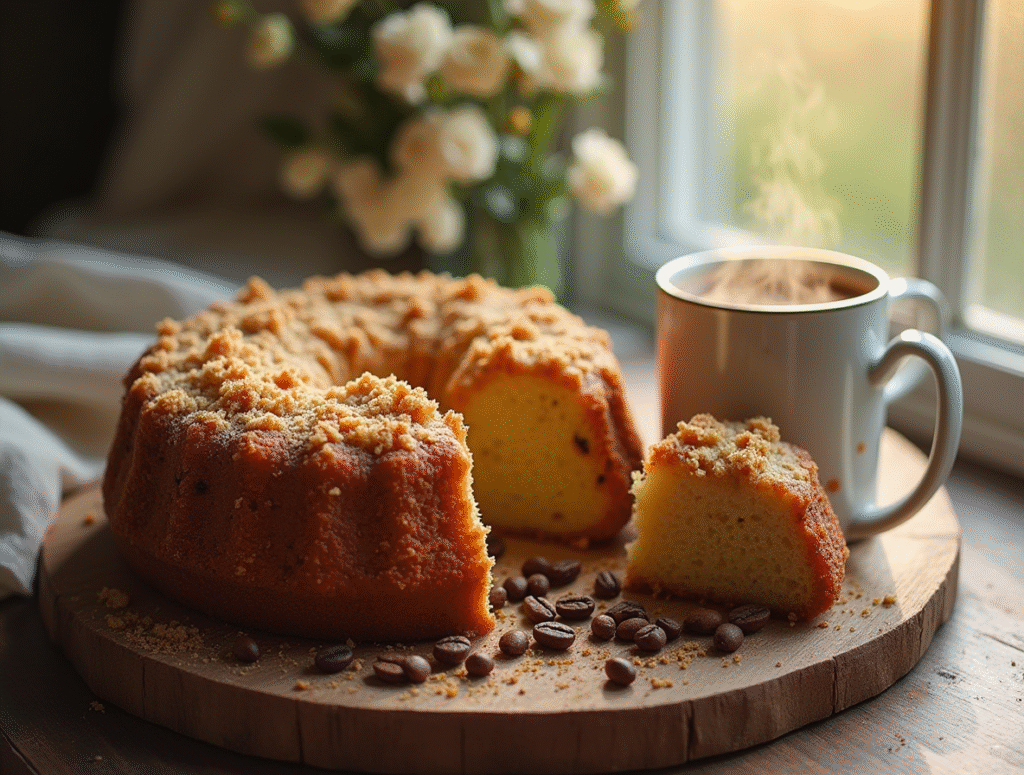
Ice Cream Cake: 7 Creative Toppings You Need to Try
Pineapple Upside Down Cake: How to Make It in 6 Simple Steps
Carrot Cake Recipe: How to Bake the Best One in 7 Simple Steps
Vanilla Raspberry Cake: How To Bake In 5 Easy Steps
Vanilla Cake With Strawberries: 6 Easy Steps From Scratch
“We Value Your Feedback: Share Your Experience with Us!”
There are no reviews yet. Be the first one to write one.
